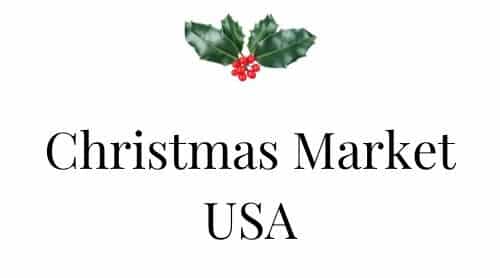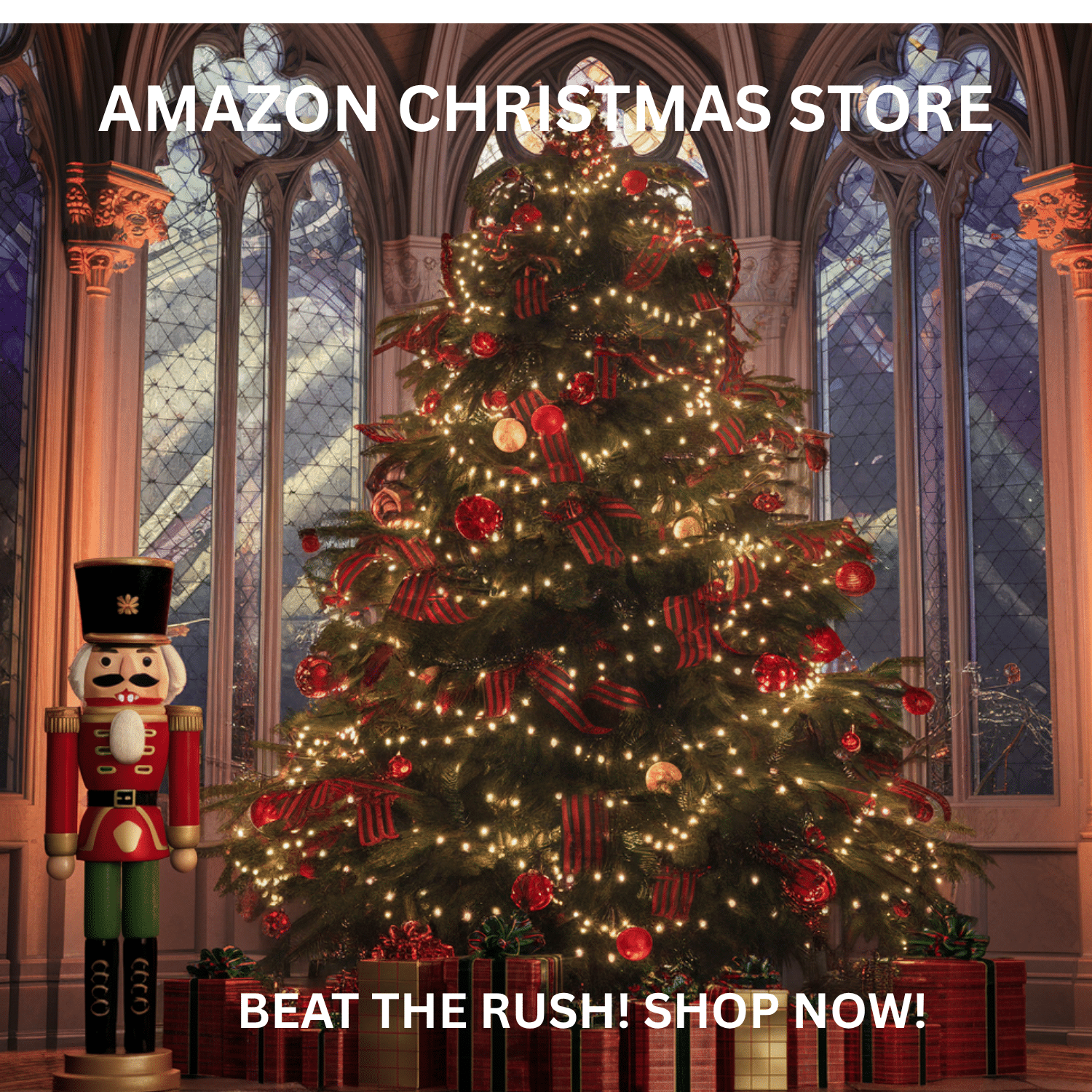Pioneering Christmas Markets: The First Few Christmas Markets in American Cities
Christmas markets have a magical quality that transports you to a wintry wonderland. These markets, with their festive lights, delicious treats, and unique gifts, have a rich history.
Christmas markets originated in Germany in the Middle Ages. They have since found a warm welcome in American cities too. American Christmas markets offer a blend of European traditions and local culture, creating a unique holiday experience.

Pioneers of these markets brought together local artisans, crafters, and performers to create a vibrant holiday atmosphere. The Pioneer Christmas & Vintage Market in Dade City, Florida, is one such example. Here, you can shop for handmade gifts, enjoy live entertainment, and even see historical craft demonstrations.
Other markets also offer a variety of activities, from craft demonstrations to reindeer games for kids.
The charm of these markets lies not just in their festive offerings but also in their strong community spirit. When you visit events like the Pioneer Christmas, you support small vendors and local businesses, making your holiday shopping meaningful and memorable.
Table of Contents
- 1 The Inception of Christmas Markets in American Cities
- 2 Key Organizers and Pioneers
- 3 Unique Features of the Earliest Pioneering Christmas Markets
- 4 Cultural Influences Shaping Early American Christmas Markets
- 5 Impact and Legacy of Early Christmas Markets
- 6 Frequently Asked Questions
- 6.1 Which city in Europe hosts the oldest Christmas market?
- 6.2 What are the top-rated Christmas markets in Europe?
- 6.3 When is the typical start date for Christmas markets in Europe?
- 6.4 What is the most well-known Christmas market globally?
- 6.5 Where can I find the most picturesque Christmas market?
- 6.6 What are the characteristics that define a traditional Christmas market?
Key Takeaways
- Christmas markets in America blend European traditions and local culture
- Pioneers organized early markets to showcase local artisans and performers
- Visiting a Christmas market supports small vendors and community initiatives
The Inception of Christmas Markets in American Cities

Pioneering Christmas markets in the United States took shape inspired by European traditions, particularly those from Germany and Austria. The first markets in major American cities aimed to recreate the festive charm of their European counterparts.
The First Documented Pioneering Markets in Major Cities
New York City and Chicago were among the first to embrace Christmas markets. New York’s Union Square Park and Columbus Circle are famous locations for festive markets today. The Union Square Holiday Market stands out with its curated selection of vendors offering gifts, food, and crafts.
Find the best accommodations and airfares
Check availability at 5* hotels, guest houses and apartments rated "superb" or "exceptional" by visitors just like you.
NO RESERVATION FEES
CHECK AVAILABILITY FOR YOUR DATES HERE
Chicago’s Christkindlmarket began in Daley Plaza in 1996, bringing an authentic German experience to the Midwestern city. Modeled after the Nuremberg Christmas market, it features traditional Glühwein, bratwurst, and handcrafted ornaments. Other cities like Philadelphia soon followed, hosting their own versions of these festive gatherings.
Early Influences and Inspirations from European Traditions
European Christmas markets have long influenced American versions. Germany and Austria are particularly notable for their historic markets, dating back to medieval times. The markets feature wooden stalls, twinkling lights, and seasonal treats like gingerbread and mulled wine.
The Christmas market’s roots trace back to Vienna in 1296 when Duke Albrecht I permitted seasonal fairs. Inspired by these traditions, American markets adopted similar elements to bring a European holiday feel to urban settings. The aim was to offer a community space for celebrating the festive season.
Initial Public Reception and Challenges
When Christmas markets first appeared in the United States, the reception varied. Some cities embraced the concept quickly, while others took time to warm up to the idea. In New York and Chicago, markets saw a mix of curiosity and enthusiasm.
However, organizers faced challenges like replicating the authentic feel of European markets. Ensuring a diverse array of vendors, managing crowds, and dealing with weather conditions were part of the initial struggles. Over time, these markets adapted and grew, becoming key seasonal attractions in their respective cities.
Key Organizers and Pioneers

Exploring the roots of Pioneering Christmas markets, you’ll find many key figures and communities that played crucial roles in their development. Each group made unique contributions that shaped these cherished holiday traditions.
Influential Figures in Establishing Early Markets
In the early days of Christmas markets, certain visionaries helped turn small, local bazaars into thriving holiday attractions. People like Johann Hinrich Wichern, a 19th-century German theologian, transformed seasonal fairs with innovative ideas. He is credited with inventing the Advent wreath, which added a fresh layer of excitement and tradition.
You can also look at market founders in towns and cities who saw the potential for economic growth and community gathering. These leaders knew that by creating festive markets, they could attract visitors and boost local business. Their foresight helped cement the Christmas market as an annual highlight for many communities.
Contributions of Immigrant Communities
Immigrant communities have always played a pivotal role in the spread and richness of Christmas markets. German immigrants brought with them their beloved holiday customs, including the idea of festive markets.
In cities like Chicago and Cincinnati, these traditions took root and flourished, becoming beloved local events.
These communities introduced foods, crafts, and decorations that added diversity and flavor to Christmas markets. The blend of different cultural practices helped make each market unique. By sharing their heritage, immigrant communities enriched the festive atmosphere and ensured these markets remained popular and cherished by all.
Role of Local Governments and Business Leaders
Local governments and business leaders have been instrumental in supporting and expanding Christmas markets. They provide crucial funding, security, and logistical help to ensure these events run smoothly.
City councils often encourage market development to boost tourism and local commerce.
Business leaders see the economic potential in these festive gatherings. By sponsoring market stalls or offering products and services, they help create a lively and varied marketplace. Their investments ensure that markets can offer a wide range of goods, from handmade crafts to delicious holiday treats, making them a must-visit destination each year.
Unique Features of the Earliest Pioneering Christmas Markets

Early Christmas markets blended European traditions with local flavors. These markets were known for their festive atmosphere, rich cultural history, and artisanal goods.
Traditional Elements Brought Over from Europe
Many elements of the earliest Christmas markets came directly from Europe. One key feature was the Christkind, a traditional gift-bringer symbolized by a child-like angel.
Another mainstay was mulled wine. This hot, spiced drink became a favorite among market visitors. Ornaments, often handcrafted, were also popular items for sale. Markets were adorned with decorations that celebrated the Christmas village aesthetic, complete with twinkling lights and festive garlands.
Innovative Local Additions and Adaptations
While rooted in European tradition, early markets quickly adapted to local tastes and styles. In many places, vendors started creating niche products specific to their region. This might include unique holiday crafts or foods only found in that market.
For instance, American markets such as the Downtown Holiday Market incorporated local traditions. There, you could find local artisans selling handmade goods that weren’t available elsewhere. This blend of traditional and local made each market a unique experience.
Entertainment, Food, and Craftsmanship
The earliest Christmas markets were not just about shopping; they were immersive cultural celebrations. Live music, often featuring holiday carols, filled the air, adding to the festive ambiance.
Street performers and bands played throughout the event, keeping spirits high.
Food was another highlight. In German markets, for instance, you would find bratwurst and roasted chestnuts among other seasonal treats.
The craftsmanship on display was remarkable, with artisans demonstrating and selling their handmade goods, from wooden toys to intricate ornaments.
Cultural Influences Shaping Early American Christmas Markets

Early American Christmas markets were influenced by a mix of European traditions and local customs. These markets varied greatly depending on the region, and they had a significant impact on local culture and holiday celebrations.
Blend of European and American Holiday Traditions
The roots of American Christmas markets can be traced back to Europe, where traditions like the Old World Christmas Market set a standard.
In the United States, these markets blended European elements with American innovation. German communities in cities like Philadelphia, influenced by markets like the Germania Society Christkindlmarkt, introduced Christmas trees and unique crafts.
In New York, the Union Square Holiday Market showcased an array of artisanal goods, reflecting the craftsmanship imported by European immigrants. This fusion of old and new created a festive atmosphere that resonated with many, making Christmas markets a cherished part of holiday traditions in the U.S.
Regional Variations Across Different Cities
Different American cities brought their own flavor to Christmas markets. In Philadelphia, Love Park hosted one of the most famous markets, drawing influences from German fairs with its iconic stalls and festive lights.
Each city tailored these markets to fit local tastes and traditions, making them popular community events.
Southern towns often emphasized local crafts and foods, while northern cities might feature more international stalls. These variations allowed each market to feel unique, attracting visitors eager to experience different takes on the holiday season. This regional diversity helped embed Christmas markets deeply into a city’s cultural landscape.
Impact on Local Culture and Holiday Celebrations
Christmas markets did more than sell goods; they became central to community celebrations and helped shape the holiday spirit. They encouraged people to come together, celebrating with food, music, and festivities that reflected their own cultural heritage.
In towns like those in Pennsylvania, these markets fostered a sense of unity and excitement.
Holiday spirit was spread through these gatherings, making the season feel special. The lasting influence of these markets can still be seen today, as they continue to be a key part of holiday celebrations across the country, bringing people together in the true spirit of Christmas.
Impact and Legacy of Early Christmas Markets
Early Christmas markets have played a pivotal role in shaping how we celebrate the holiday season today. Their influence is seen in their growth and evolution, their spread to the USA, and the rich traditions they maintain from their historical beginnings.
Growth and Evolution Over the Years
Christmas markets began modestly in Europe. One of the first recorded markets was held in Vienna in 1296. They slowly spread across Germany and other regions during the Middle Ages.
By the 15th and 16th centuries, markets like the one in Dresden had become major events. They attracted large crowds with goods and festive entertainment.
In the 1930s, these markets began to transform. They started to focus less on pure trade and more on creating an immersive experience.
This change included elements like festive entertainment, Victorian costumes, and the inclusion of nativity scenes. It made the markets more about the shared holiday spirit than just commerce.
Influence on Modern Christmas Markets in the USA
Today, many U.S. cities host Christmas markets inspired by those in Europe. The biggest influence can be seen in events like Chicago’s Christkindlmarkt.
It features traditional crafts, German food, and festive entertainment modeled after those old European markets. The spread of these markets to America shows their lasting appeal and adaptability.
These markets offer a chance for people to experience European holiday traditions without leaving the country. They often feature vendors selling handmade items and festive treats, mirroring what you might find in a market in Krakow or Bethlehem.
The influence on American holiday culture is clear in the growing number of such markets each year.
Historical Significance and Enduring Traditions
Christmas markets carry great historical significance as they embody centuries-old traditions. Each market, from those in medieval Germany to those established in modern times, keeps alive practices and customs that have been passed down through generations. They help us connect with the past while celebrating the present.
You can still find markets that take you back in time, with vendors dressed in Victorian costumes and selling traditional crafts.
These elements not only add charm but also preserve the cultural heritage of Christmas celebrations. While markets continue to evolve, many of their core traditions remain, creating a link between history and modern festive customs.
Frequently Asked Questions

European Christmas markets are known for their rich history, festive atmosphere, and beautiful settings. People often have many questions about these markets, ranging from their origins to the best ones to visit.
Which city in Europe hosts the oldest Christmas market?
The oldest Christmas market in Europe is held in Munich, dating back to 1310. This market has maintained its charm and traditions for centuries, offering a magical experience every year.
What are the top-rated Christmas markets in Europe?
The top-rated Christmas markets in Europe include those in Germany, Austria, and France.
Popular destinations are Nuremberg and Strasbourg, known for their festive decorations, local crafts, and delicious food.
When is the typical start date for Christmas markets in Europe?
Christmas markets in Europe generally begin in late November and run until early January.
German markets usually close by December 23rd, so plan accordingly if you want to visit during the peak holiday season.
What is the most well-known Christmas market globally?
The most well-known Christmas market globally is likely the Christkindlmarket in Chicago.
It’s renowned for its German roots and features traditional items like cuckoo clocks, beer steins, and strudel.
Where can I find the most picturesque Christmas market?
Rothenburg ob der Tauber in Germany is often cited as the most picturesque Christmas market location. Its medieval setting, half-timbered houses, and festive decorations create a fairy-tale atmosphere.
What are the characteristics that define a traditional Christmas market?
A traditional Christmas market is characterized by its festive atmosphere. It features handmade crafts, local foods, and seasonal decorations.
You will find stalls selling gingerbread, mulled wine, and ornaments. These are often set against a backdrop of historic buildings and twinkling lights.
Christmas Market Closures
Due to econonic conditions and tariffs, some Christmas Markets may cancel their events due to lack of vendors. If you are aware of a closed market,or find errors on a listing or an image, please reach out on our Contact Us page so that we may update this post.




